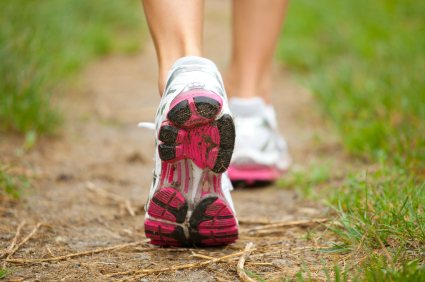 I mean it! New research suggests that if you want to hit that fatigue, depression, flashes and mood swings in one fell swoop, you may not have to resort to HRT. And the solution may be relatively simple: move.
I mean it! New research suggests that if you want to hit that fatigue, depression, flashes and mood swings in one fell swoop, you may not have to resort to HRT. And the solution may be relatively simple: move.
I can’t stress the importance of physical activity as we age enough. From bone health to heart health to mental health, it is the one accessible, equal opportunity strategy, regardless of income or geography. Because even if you don’t have entry to the gym, you can walk, run, bike, step, or engage in other activities that don’t require a membership or a monthly fee.
In face, researchers are reporting that simply engaging in vigorous physical activity, i.e. 7 days of a combination of moderate intensity/intense activities that add up to 3000 MET minutes a week) can significantly decrease menopausal symptoms, in particular fatigue, depression, insomnia and hot flashes. (Activity level is scientifically measured by units known as METs, or metabolic equivalents; vigorous activity is equivalent to 8 METs and moderate activity to 4 METs).
In a study of over 300 women between the ages of 45 and 60, the most active had about 75% lower menopausal symptom scores. Yet, exercising only moderately(e.g. 3 or more days a week of vigorous activity for at least 20 minutes daily or 5 or more days of moderately intense activity for at least 30 minutes a day) can also reduce strong menopausal symptoms, just not to the extent that more intense activity does.
The reasons behind the benefits of physical activity are pretty simple: your endorphins play a role in vasomotor symptoms and low levels are associated with increased release of luteinizing hormone (a hormone produced by the pituitary gland that is involved in ovulation), leading to hot flashes, heart racing, sleepless ness, anxiety and muscle discomfort. By raising your endorphin levels, even in light of declining estrogen, you stand a better chance at placing a roadblock in front of this process. However, this is only part of the story; body composition, mood and how well your themoregulatory system is functioning are also important.
Still, the message is clear: Move it to lose it, “it” being those trouble menopausal symptoms.
6 Comments
Trackbacks/Pingbacks
- Exercise and sleep. Sleep and exercise. Does it? Or doesn't it? | FlashFree : Not Your Mama's Menopause - [...] saying. However, although study findings have been fairly consistent with regard to connecting regular or vigorous physical activity to…







I have found this to be very true in my own life. I’ve even noticed a pronounced reduction in hot flashes at night after just one vigorous workout! In our hunter/gatherer past, we were always on the move thus the theory of movement=improved health is I suspect, deeply rooted in our genetic makeup.
Thanks for sharing this Heidi. So great to have experienced feedback. I now that if I don’t move daily, the day becomes a slippery slope, as does the night.
Agree, Liz. from what I’ve read, WHO suggest to have physical activity for at least 30 minutes daily. we live in getting faster world, but fewer physical activity. sighh…
Actually, 30 min is great for staving off illness but 60 min is necessary to maintain weight.
Thanks for this article. It’s good to know there is research to confirm my own findings. I find that exercise definitely helps with the hot flashes and sleep disturbances. They still exist, but they are reduced.
Gina – the research is really starting to look good on exercise. Yoga has also been shown to be effective. A lot of symptoms are tied to environmental stress so if you can reduce that, it may also help.